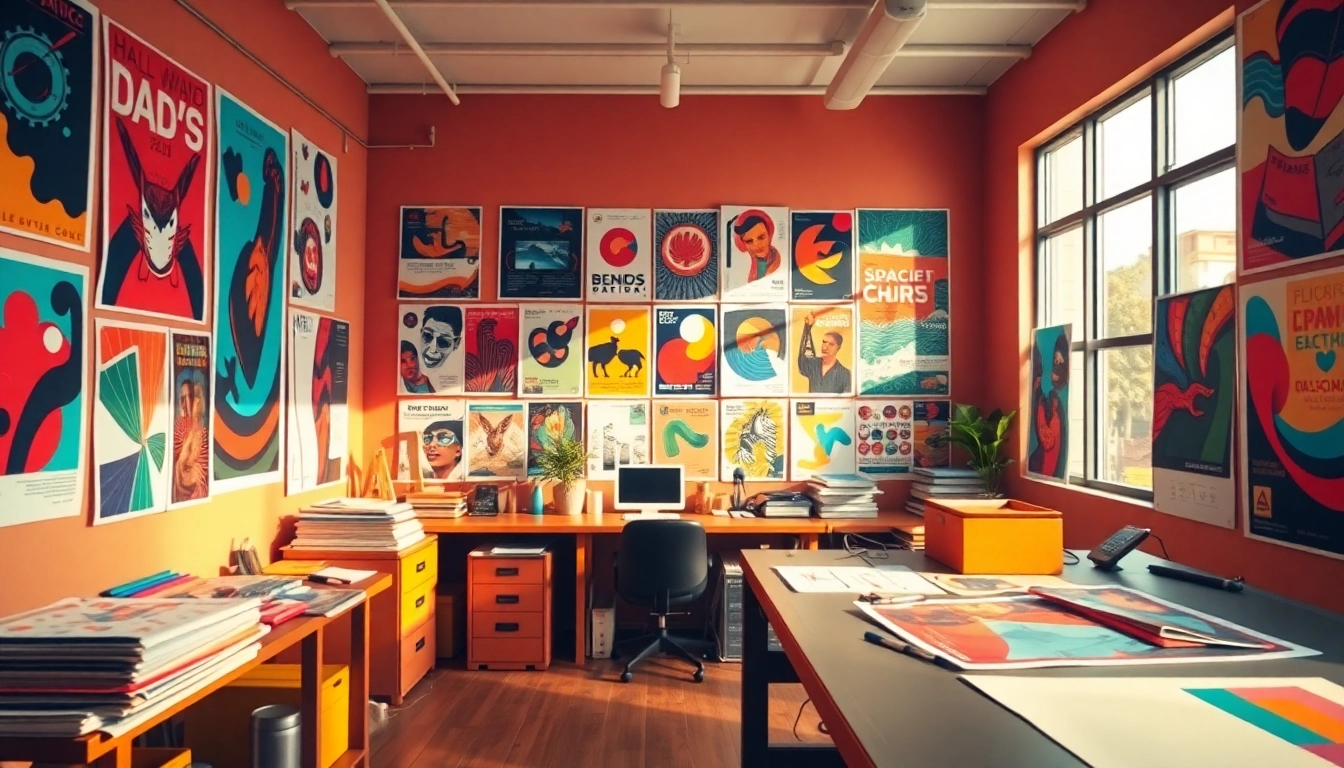Expert Guide: Maximizing Impact with Poster Printing Strategies

Understanding Poster Printing
What is poster printing? Unpacking the Basics
Poster printing is the art and science of producing large-format prints meant to convey a message, advertise products, or showcase artwork. This form of printing comes into play in various settings, from commercial advertising to personal events, and serves multiple purposes—from grabbing attention to providing information.
At its core, poster printing encompasses not just the aesthetic appeal of the design, but also the technical capabilities of printers and materials used. The ultimate goal is to create visually striking prints that resonate with the target audience.
Benefits of High-Quality Poster Printing for Marketing
High-quality poster printing offers numerous advantages in marketing. Firstly, posters can be an effective tool for brand visibility; they can be strategically placed in high-traffic areas to capture attention. The tactile nature of printed posters also lends them a level of credibility that digital ads often lack.
Quality prints help ensure that the colors portrayed on screen translate accurately to the physical medium, enhancing the brand’s image. Additionally, posters can serve dual purposes: not only do they promote an event or product, but they can also double as décor, extending their lifespan and visibility.
Key Materials Used in Poster Printing Processes
The range of materials used in poster printing is vast, but they can generally be categorized into paper, fabric, and specialty materials.
- Paper: Typically, poster-grade paper is thicker (about 200-300 gsm) than standard paper, providing durability and high-quality imagery.
- Fabric: Fabric posters are gaining popularity, especially for events and presentations. They offer a softer look and can be easily folded or stored.
- Specialty materials: Options like self-adhesive vinyl, backlit materials, and even eco-friendly bases are becoming more common, offering unique finishes and functionalities.
Designing for Impact in Poster Printing
Choosing the Right Colors for Effective Messaging
Color psychology plays a vital role in poster design. Different colors evoke different emotions, allowing designers to convey messages effectively through a clever color palette.
For instance, yellow and orange can evoke feelings of happiness and energy, while blue tends to instill trust and calmness. By understanding these associations, marketers can choose colors that align with the message they wish to communicate, ensuring their posters have the desired impact.
Fonts and Typography in Poster Printing Design
Typography is not just about picking a font; it is about creating a visual hierarchy that guides the viewer through the poster’s content. Effective typography can increase readability and enhance the poster’s aesthetics.
Designers should focus on using clear, legible fonts for titles and important information while using contrasting fonts for supplementary text. White spacing and alignment techniques should also be considered to maintain an organized and visually pleasing design.
Incorporating Images and Graphics for Engagement
Images are a powerful tool in poster printing, capable of evoking emotions and drawing attention. High-resolution images and custom graphics should be used to create a memorable impact.
Furthermore, images can help break up text-heavy posters, providing visual relief and making the poster more engaging. However, it’s essential to ensure that the images used do not overshadow the message; they should complement the text and contribute to the overall design harmony.
Poster Printing Techniques Explained
Offset Versus Digital Poster Printing: Which to Choose?
When it comes to choosing a printing technique, two main methods dominate the market: offset and digital printing. Each has its own sets of advantages and disadvantages that cater to different project needs.
- Offset Printing: This technique is ideal for large volume runs, offering consistent quality and lower costs per unit as quantity increases. It uses plates to transfer ink, resulting in vibrant colors and sharp texts, making it a preferred option for businesses looking to produce significant quantities.
- Digital Printing: On the other hand, digital printing offers rapid turnaround times and the ability to print smaller quantities without incurring high setup costs. This method is ideal for posters needing personalization and quick production.
Understanding Poster Printing Sizes and Formats
The sizing of posters can vary widely based on promotional needs. Common sizes include:
- A2: 16.5″ x 23.4″ – Great for small businesses and local events.
- A1: 23.4″ x 33.1″ – Typically used for advertising and promotions.
- A0: 33.1″ x 46.8″ – Often used for display at conventions and exhibitions.
It’s crucial to choose the correct size based on where the poster will be displayed and the message that needs to be communicated.
Finishing Options for Enhanced Posters
Enhancing the durability and appearance of posters can be achieved through various finishing techniques.
- Laminating: This process protects the poster from moisture and UV damage, making it ideal for outdoor displays.
- Mounting: Mounting on foam board or Gatorboard can provide a professional look and added durability.
- Trimming: Custom shapes and edge trimming can also help a poster stand out.
Best Practices for Successful Poster Printing Campaigns
High-Quality Designs: Tips for Optimizing Appeal
To create appealing poster designs, start by establishing a clear objective. What message should the poster convey? Who is the target audience? Once these questions are known, the design can focus on elements like layout, imagery, and typography to ensure clarity and engagement.
Regularly reviewing design trends and studying successful campaign examples can further enhance poster effectiveness. Keep the message concise and ensure that the call-to-action is clearly visible to encourage follow-through from the audience.
Distribution Strategies to Maximize Visibility
An effective poster is only as good as how well it is distributed. Identify key locations where your target audience frequents to place posters effectively.
This could mean partnering with local businesses, placing posters in strategic public areas, or using social media to promote the locations of poster displays. Engaging community influencers or groups can also amplify visibility.
Tracking the Effectiveness of Your Poster Printing Efforts
Just as important as creating an effective poster is the need to measure its impact. This can be approached through methods such as:
- Surveys: Collect feedback from viewers about the message and design.
- Promotional Codes: Use unique codes on posters to track conversion rates.
- Analytics: Integrate tracking links or QR codes to monitor traffic and engagement stemming from poster design.
These methods offer valuable insights into which campaigns were successful and why, allowing for continuous improvement over time.
The Future of Poster Printing
Emerging Technologies in Poster Printing Practices
The poster printing industry continues to evolve due to emerging technologies such as 3D printing and augmented reality (AR).
With 3D printing, marketers can now create visually textured posters that offer a tactile component to the design, capturing increased attention. Meanwhile, AR has the potential to turn static posters into interactive experiences, allowing audiences to engage with the content directly.
Eco-Friendly Materials and Sustainable Poster Printing Options
As environmentally conscious choices become increasingly prioritized, the poster printing industry is also adapting. Options like recycled paper, biodegradable inks, and sustainable printing practices are on the rise.
Adopting eco-friendly practices not only meets consumer demand but can also reduce overall production costs and waste.
Trends Shaping Poster Printing in the Coming Years
The design elements that capture attention are always changing. Minimalist designs, bold typography, and vibrant colors are trending. Furthermore, personalization remains crucial, and with advancements in digital printing technologies, more posters are tailored to specific audiences or individual tastes.
As we look ahead, the integration of digital and physical marketing strategies will keep poster printing relevant in a predominantly digital age, ensuring that it remains a valuable tool for communicating effectively.






